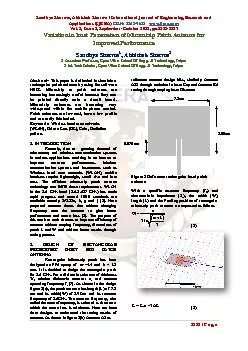PDF-Page of NEW DIRECTIONS IN ROLLER GINNING INDUSTRYby M.K. Sharma Presid
Author : tatiana-dople | Published Date : 2015-07-28
NEW DIRECTIONS IN ROLLER GINNING INDUSTRYPage of production capability and loweper unit cost of processing in automatic setup where the manpower requirement is very
Presentation Embed Code
Download Presentation
Download Presentation The PPT/PDF document "Page of NEW DIRECTIONS IN ROLLER GINNING..." is the property of its rightful owner. Permission is granted to download and print the materials on this website for personal, non-commercial use only, and to display it on your personal computer provided you do not modify the materials and that you retain all copyright notices contained in the materials. By downloading content from our website, you accept the terms of this agreement.
Page of NEW DIRECTIONS IN ROLLER GINNING INDUSTRYby M.K. Sharma Presid: Transcript
Download Rules Of Document
"Page of NEW DIRECTIONS IN ROLLER GINNING INDUSTRYby M.K. Sharma Presid"The content belongs to its owner. You may download and print it for personal use, without modification, and keep all copyright notices. By downloading, you agree to these terms.
Related Documents














